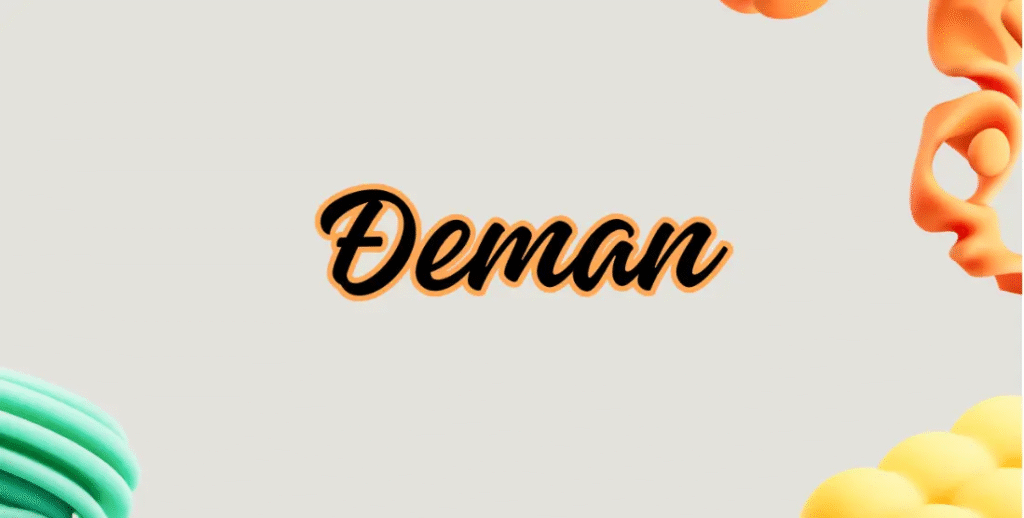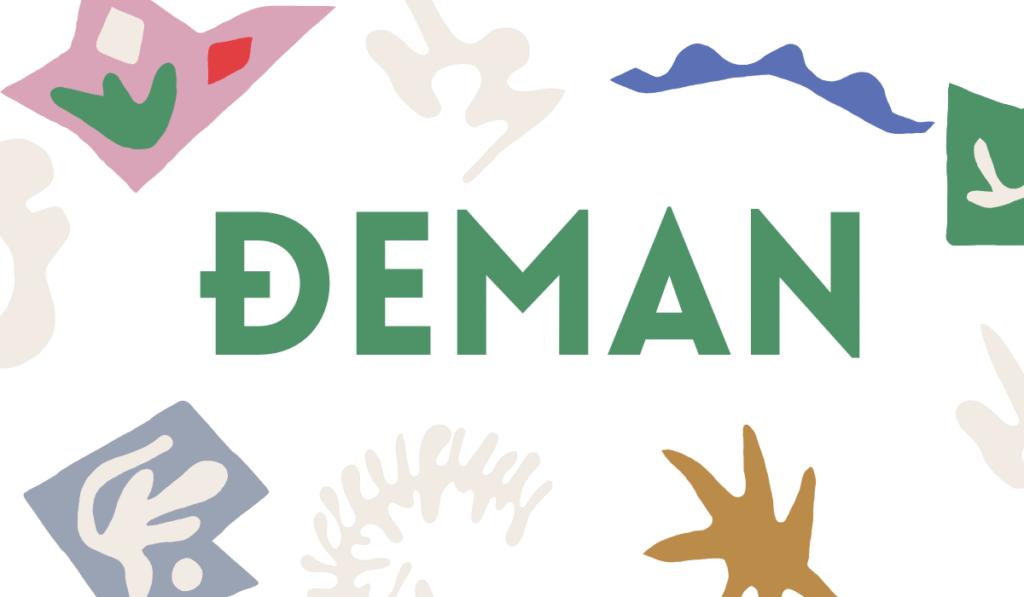Introduction to Đeman
In the vast fabric of cultural myths and legends across the world, few words evoke as much mystery as đeman. Found primarily in Balkan folklore, particularly in the oral traditions of South Slavic peoples, đeman is more than just a supernatural being. It represents a force, a presence, a shadow walking alongside human lives—sometimes as an enemy, sometimes as a twisted reflection of desire, and at times, a misunderstood entity caught between two worlds.
Unlike commonly known spirits or demons from Abrahamic religions, the đeman is deeply rooted in regional belief systems, shaped by centuries of oral history, syncretism between paganism and organized religion, and generational fears and dreams. This article explores the nature, evolution, and cultural imprint of the đeman across time and space.
The Etymological Roots of Đeman
The word “đeman” is believed to have derived from the Turkish word cin (from the Arabic jinn), adapted through Slavic linguistic patterns during the Ottoman period. However, while the phonetic similarity links it to jinn or demons, the đeman developed a character all its own within Slavic and Balkan culture.
The transformation of the term reflects not only linguistic adaptation but cultural assimilation. Over time, the đeman became uniquely Balkan, shaped by local geography, beliefs, and traditions.
Characteristics and Forms of a Đeman
Đeman does not always appear in the same way. One of the most fascinating aspects of this being is its fluid nature. Across stories, it can take various forms, each carrying symbolic meaning:
- The Shadowed Man: A tall figure with no face, often seen only from the corner of one’s vision.
- The Beautiful Stranger: Sometimes appearing as an irresistible man or woman, luring victims with charm before revealing its dark nature.
- Animal Form: Particularly in rural folklore, a đeman may appear as a black dog, a snake, or a raven—all animals associated with liminal spaces between the living and the dead.
- Invisible Presence: Many traditions insist that the đeman is not meant to be seen directly. It exists in wind, whispers, or the feeling of being watched.
The ever-changing form of the đeman reflects its symbolic role: it represents the unknown, the unexplainable, and the hidden parts of the human psyche.
The Đeman in Balkan Folklore
In Bosnian, Serbian, and Montenegrin folklore, đeman often plays the role of a spiritual antagonist. Villages speak of individuals being “đeman-touched” or “đeman-seen,” meaning someone who has either encountered or been influenced by the being.

Folk Tales and Oral History
- In an old Montenegrin tale, a shepherd disappears every night only to be found sleepwalking into the forest. Elders claim he is following a đeman’s voice, calling him into the underworld.
- In rural Bosnia, some believe that đemani guard the ancient bridges and ruins. Travelers who do not show respect or who laugh near such places risk bringing a curse upon themselves.
- A common superstition claims that the đeman enters the house through mirrors left uncovered at night or through shadows cast by moonlight.
Đeman vs. Demon: Distinctions in Meaning
It’s crucial to understand that the đeman is not simply a demon. Though the two terms are often translated interchangeably in modern texts, the đeman carries different connotations:
| Aspect | Đeman | Demon (Western View) |
|---|---|---|
| Origins | Balkan/Ottoman/Pagan syncretism | Judeo-Christian theology |
| Morality | Ambiguous, not always evil | Typically evil |
| Appearance | Shapeshifter, undefined | Often horned, grotesque |
| Role in Stories | Trickster, punisher, guide | Antagonist, corrupter |
| Interaction with Humans | Selective, mystical | Direct, possessive |
This differentiation is important when analyzing the đeman from both cultural and psychological perspectives.
Psychological Interpretation: Đeman as the Shadow Self
Some scholars and psychoanalysts, inspired by Jungian theories, interpret the đeman as a representation of the shadow self—the unconscious part of the psyche that houses suppressed desires, fears, and instinctual drives. The fact that đeman often takes a form that reflects a person’s fear or longing supports this interpretation.
In this view, encounters with a đeman in dreams or visions are not mere superstition but symbolic messages from the inner mind. Such interpretations add a rich psychological layer to the already complex mythology of the đeman.
Đeman in Modern Culture
Although once relegated to rural legends and fireside tales, đeman has found a place in contemporary art, film, and literature.
- Films: A few Balkan horror films have begun to explore the đeman myth as a symbol of post-war trauma and generational guilt.
- Music: Underground and folk musicians sometimes use the imagery of a đeman to reflect on inner struggles or societal decay.
- Literature: A growing number of authors are reviving the concept in gothic horror, postmodern fantasy, and speculative fiction.
This resurgence suggests that while modernization has shifted belief systems, the đeman remains relevant—especially as a metaphor for personal and collective darkness.
Cultural Symbolism and Rituals
Across the Balkans, specific rituals and symbols have been used to protect against or appease a đeman:
- Salt and Iron: Believed to ward off malevolent spirits, these items are placed at thresholds or carried on one’s person.
- Night Chants: Certain rural communities use protective chants before sleep to block the đeman from entering dreams.
- Charcoal Circles: In older traditions, people would draw circles in charcoal around sleeping children to protect them from being lured away.
- Breaking Mirrors: It’s believed that mirrors may trap a đeman. Breaking them—especially after a haunting dream—is a method to “cut the connection.”
Such practices are not mere superstition—they function as coping mechanisms in cultures where psychological language was limited or stigmatized.
Places Associated with the Đeman
There are specific locations across the Balkans believed to be hotspots for đeman activity:

- Bogomil Tombstones (Bosnia): Ancient graves with esoteric symbols, often said to be guarded by đemani.
- Crna Reka Monastery (Serbia): Rumors claim that strange occurrences—cold winds, shadowy figures—are common at night.
- Abandoned Turkish Baths: In cities like Mostar and Skopje, these ruins are believed to be liminal spaces where the đeman dwells.
- Cursed Forests: Particularly in eastern Montenegro, tales abound of forests where travelers lose their way, only to return changed.
These physical landscapes serve as psychological terrains as well—settings where fear, awe, and the supernatural collide.
Đeman and the Liminal
One of the most powerful concepts associated with the đeman is liminality—existing between two states. This applies both literally and symbolically:
- Between life and death
- Between consciousness and dream
- Between visible and invisible
- Between reality and myth
The đeman doesn’t just represent what we fear—it is the fear of the in-between, the undefined. This is why it appears during twilight, in mist, behind curtains, or just before waking.
Is Đeman Still Feared?
Surprisingly, yes. In many Balkan villages, older generations still speak cautiously about đemani. Even among the youth, the concept has not vanished; it has simply transformed. Now, it may be associated with sleep paralysis, anxiety, or the unexplained sense of dread.
Urban legends evolve, but they do not disappear. The đeman continues to walk beside the modern world—just hidden better.
Conclusion
The đeman is not merely a character in old stories—it is a living myth, shaped by the fears, beliefs, and imaginations of generations. Its nature defies simple categorization: not quite demon, not quite ghost, but something ancient and persistent. Whether viewed through cultural, psychological, or artistic lenses, the đeman remains a powerful reminder of the thin veil between the known and the unknown.
It lives in the silence after a whisper. It waits in the corner of an unwatched room. And perhaps, in some way, we have always known it.


